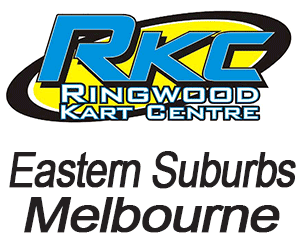from QLD Superkart Club, used with permission
Reducing lap times is the aim of the game and one area that time can be found is optimising your gear shift point.
What does optimising your gear shift points really mean? Your engine doesn’t produce the same amount of power through its whole rev range, it will rise to a peak value and then fall away again after that. Like an example shown in Figure 1 below.
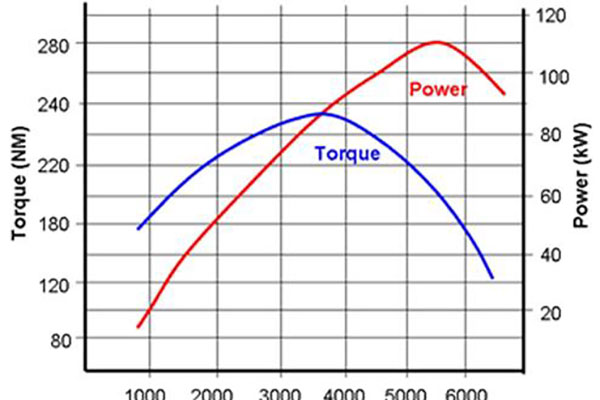
You might think that when the engine hits peak power is when you want to shift, but this would be incorrect.
You need to look at when the forward thrust being generated by the engine crosses over between gear ratios. i.e when the thrust in 3rd gear is equal to the thrust in 4th gear it’s time to change.
Changing gear earlier or later costs you forward thrust which in turn results in slower lap times. Now that it is clear as mud let’s dive into the more technical side of things.
To start with you will need the following information:
- Up to date Dyno Data
- Gearbox ratios
- Final drive ratio
- Tyre diameter
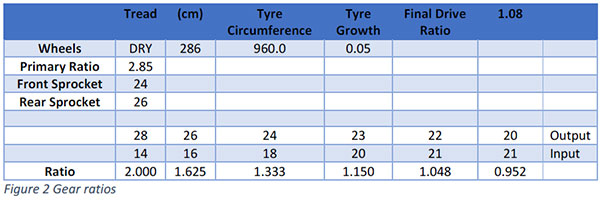
Once you have all your ratios and tyre diameter allowing for up to 5% growth at speed, you can work out road speed for a given RPM in any gear see examples below.

The table below shows the road speed in meters/second and the Thrust value in each gear. Thrust (Newtons) = Engine Power (watts) / Road Speed (meters/second)
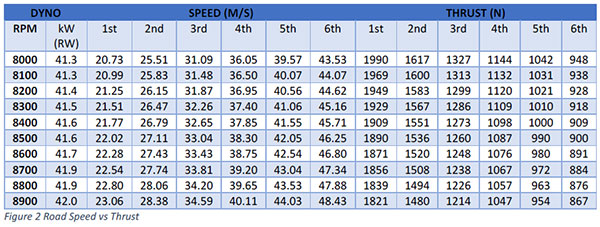
Now that we have this information, we can plot it on a graph (see below). This allows us to see the cross over point in each gear and determines what RPM the shift point should be.
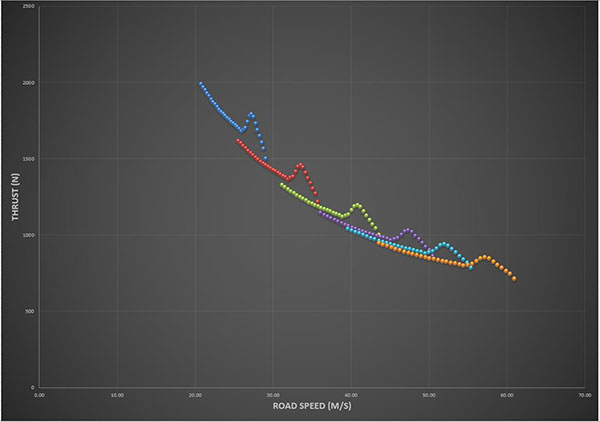
As seen in the graph, the cross over point is not the same for every gear. In the lower gears 1-3rd it’s more beneficial to change later vs the higher gears 4-5-6th where there is a definite cross over point (see below chart).
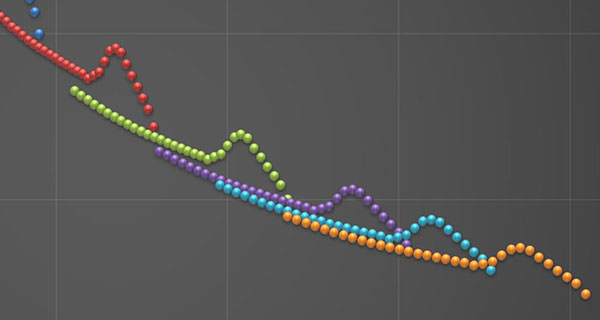
We hope you’ve enjoyed this technical article and if you have any questions or would like to know more let us know at qldsuperkart01@gmail.com

